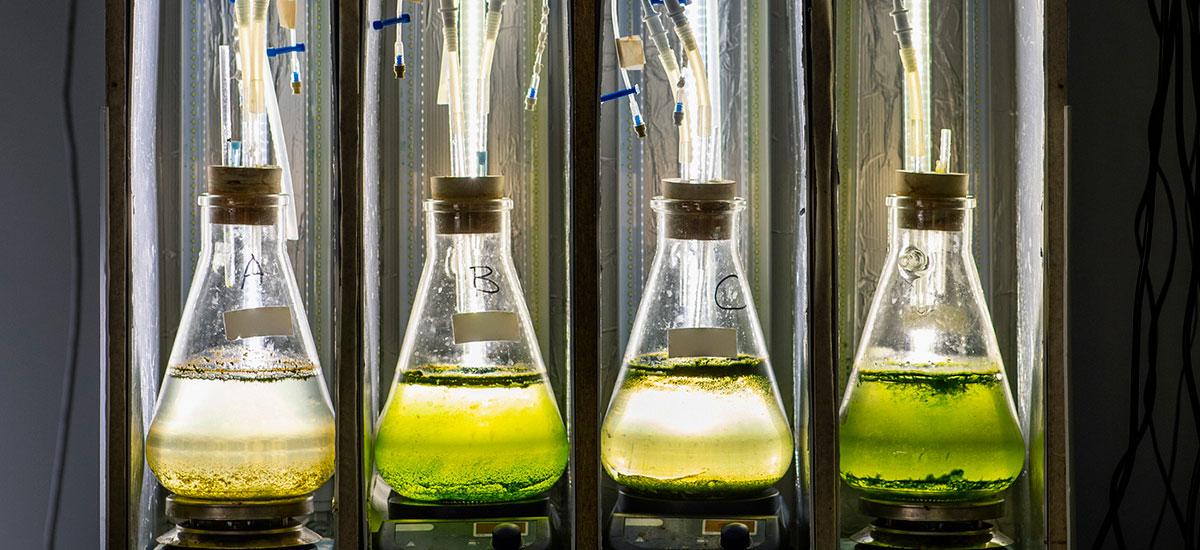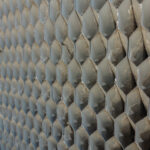
Reducing and Controlling Cooling Tower Biofilm Formation
In simplest terms, a biofilm is a group of microorganisms embedded within a self-produced matrix of extracellular polymeric substances that stick to each other on a surface. Biofilm, also referred to as slime, is a slimy, sticky polymeric mass generally composed of extracellular DNA, proteins, and polysaccharides.
Biofilm is more than a routine nuisance for cooling towers. In fact, buildup of the sticky substance costs the United States millions of dollars annually in system maintenance, repair, and lost operating efficiency. If left untreated, biofilm increases fouling, reduces heat exchange efficiency, and promotes corrosion.
Conditions that trigger biofilm production
Cooling towers present the perfect environment for biofilm formation. Warm water, constant aeration and an abundant supply of nutrients favor growth of the organisms. Ideal host surfaces like cooling tower fill and deck surfaces, suspended solids, pipe walls, and condensers housings, allow for ample habitats. The bacteria utilize nutrients and other microbes present in the water to propagate and increase in thickness. They produce polysaccharides that form a sticky protective coating, causing them to adhere to each other and surfaces to continue to thrive.
Fortunately, the right maintenance program, including the right chemical treatment, can keep biofilm under control and mitigate issues associated with it.
How biofilm forms
Bacteria most often enter the system from circulating water coming in contact with air, process exposure or contamination. Biofilm comes in two forms, algae-based and bacterial, with the latter accounting for the vast majority of cooling tower water treatment issues. Unlike algae, bacterial biofilm doesn’t require sunlight for growth. Formation of a biofilm begins with the attachment of free-floating microorganisms to a surface. Some species are not able to attach to a surface on their own but are sometimes able to anchor themselves to the matrix or directly to earlier colonists.
The bacteria utilize nutrients and other microbes present in the water to propagate and increase in thickness. They produce polysaccharides that form a sticky protective coating, causing them to adhere to each other and surfaces to continue thrive.
Problems associated with biofilm
Biofilms can lead to numerous problems in water processes, including corrosion, loss of process efficiency such as heat transfer and flow, and health issues such as Legionella.
The bacteria and biofilms can lead to localized metal loss, referred to as microbially influenced corrosion (MIC). The biofilm prevents corrosion inhibitors from reaching the fouled metal surfaces and the microbial byproducts can directly corrode base metal.
Biofilms can act as an insulator and at nearly four times more heat-resistant than simple calcium carbonate scale, a 0.045” layer of biofilm can increase chiller electrical use by 35% or more. Additionally, as the slime layer builds, restriciton and subsequent reduction in water flow can retard the cooling efficiency of heat exchangers.
Heath concerns over Legionella are significant because the bacterium associated with Legionellosis can thrive in the biomasses and become airborne in cooling tower drift.
Working to control biofilm properly
Effective biofilm control starts with basic system “hygiene” and good housekeeping practices like keeping decks clean and removal of debris.
However, a complete microbial biofilm treatment and removal program includes use of chemicals chosen for the conditions unique to your cooling system and region.
Best practices suggest that microbial biofilm removal consist of a two-step chemical treatment program. First, the application of a dispersant and penetrating agent breaks down and helps to remove the sticky polysaccharide film holding and protecting the biomass. Besides freeing the film from cooling system surfaces, the penetrant also enables the microbiocides to kill the bacteria.
The second step is the application of the biocide program. For best practices, it is recommended that the use of a non-oxidizing biocide and an oxidizing biocide be used to achieve optimal results.
It is also an industry practice to use side stream filtration to help remove the killed microorganisms and slime and prevent them from building up in the system.
Ending biofilm problems
Like so many cooling tower water treatment issues, there are multiple approaches and multiple products for controlling biofilm. The right program depends on your system and the conditions in which you operate.
Contact us today to find the most effective biofilm removal and control program that’s right for you.



